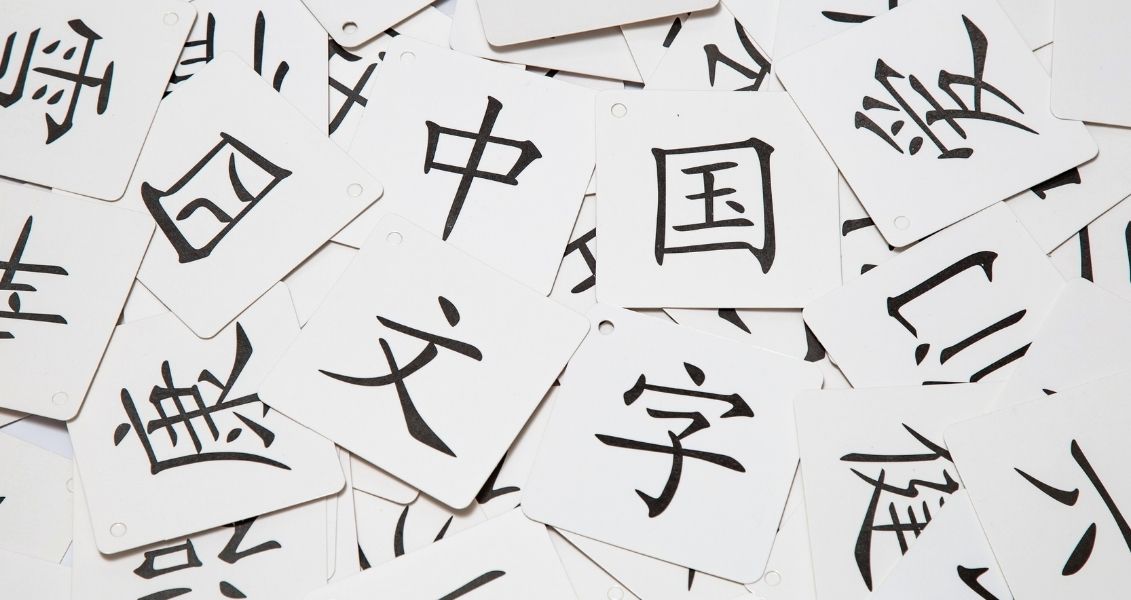Chinese Language Day
What day is it?
The only thing most of us know about the Chinese language is that it is extremely complex, there is even an expression “Chinese script”, which is used for something very obscure. However, thanks to the rapid development of China, interest in the language of this country is constantly growing. Currently, Chinese is spoken by more than a billion people on the planet, it is one of the official languages of the United Nations, and the number of those trying to learn it is constantly increasing. Chinese language dedicated to a separate holiday, which is celebrated every year on April 20. The UN established Chinese Language Day in 2010 to honor linguistic and cultural diversity, as well as equality in the use of the organization’s official languages.
How did the idea to celebrate Chinese Language Day come about?
Chinese is part of the Sino-Tibetan language family and is considered one of the oldest on the planet. Scientists divide the history of the development of the Chinese language into three periods: ancient, middle and modern.
Old Chinese, which is also called archaic, was used during the reign of the Zhou dynasty and is genetically related to all modern Chinese dialects. It was in ancient Chinese that the famous I-Ching – Book of Changes was written.
The beginning of the reign of the Sui dynasty, in the 600s AD, dates the Chinese dictionary Ceyun. It marked the next period in the history of the language — it became more complicated, and writing from carving on bronze took the form of tables and books.
Dialects
China is a huge country, so the modern Chinese language is characterized by a large number of dialects, which are grouped into groups. According to various sources, there are from seven to twelve such groups of dialects. Phonetically, they are so different that their speakers do not understand each other, but the written version is common and understandable to all Chinese.
In the 19th century, two main variants of the Chinese language emerged – Beijing and Cantonese, besides which there were more than 50 dialects. Until the 20th century, there was no linguistic unity in China, but during the last dynasties, the Ming and Qing dynasties, the Peking dialect was considered the state language. After the proclamation of the Republic of China in 1912, the country’s authorities decided to keep this version as the official language.
The Beijing dialect is the language of northern and northwestern China, also known as Putonghua or Mandarin. The latter name comes from Chinese officials who were called “mandarins”. This language is spoken by the vast majority of Chinese people – 70%, it is the language of teaching in schools and other educational institutions, it is the literary language of modern China, and it is this variant of Chinese that is usually studied by foreigners.
Simplified system of hieroglyphs
In the 20th century, a language reform program began in China, which aimed to simplify the Chinese script by reducing the number of characters and elements in their writing, popularize a single official language throughout the country, and introduce a phonetic alphabet. Thus, in the 1950s and 1960s, a second system of hieroglyphs appeared – simpler than the classical one, which allowed to increase the level of literacy in the country and is used in all official documents. The traditional system of characters continues to be used in Taiwan and Hong Kong. In an effort to make Chinese more comprehensible to the Western world, China created the pinyin system, which uses the Latin alphabet, while the tonalities in it are indicated by superscript characters.
However, this system could not displace the hieroglyphs, because they are rightfully considered the pearl of Chinese culture, embody the depth and meaning of the Chinese language, and also testify to the amazing history of the Chinese people. How and by whom the first hieroglyphs were invented is told by the ancient Chinese legend about Cang Jie, the sage and court historian of the Yellow Emperor.
This sage enjoyed universal respect because he had four eyes and could solve any mystery. Once the emperor instructed Cang Jie to come up with a new way of keeping documentation, because knotty writing had ceased to satisfy the large empire, rich in events. Contemplating this task, the sage went to the mountains, where he met a tortoise. The line patterns on her carapace fascinated Cang Jie, he thought that maybe they contained some information. Therefore, people could also transmit information using similar symbols. This is how Tsang Jie came up with the idea of creating icons that correspond to individual words. This laid the foundation of Chinese characters, which made it possible to record historical events and transmit information about them to future generations. The event was so significant that even Heaven and Earth were amazed by it, and it rained, but not from water drops, but from millet grains.
Although no artifacts confirm this legend, the earliest hieroglyphs found, carved on animal bones and shells, date from around the 17th century BC. Therefore, the influence of Chinese writing on the writing of many countries in East and Southeast Asia, in particular, Korea, Vietnam and Japan, cannot be doubted.
Calligraphy as an art form
Hieroglyphs also started a new kind of art – calligraphy. Despite the fact that the writing of hieroglyphs always follows clear and strict rules, everyone can feel like an artist who has his own unique style of writing. Traditional tools are used in Chinese calligraphy, and masters spend their whole lives perfecting their skills. The art of calligraphy instills perseverance and patience in those who practice it.
Chinese language day in history
-
1912The Republic of China has declared the Beijing dialect as the official language of the country.
-
1946Chinese is recognized as an official language of the United Nations. However, for political reasons, when China split into two states — the People’s Republic of China (mainland China) and the Republic of China (Taiwan), it was used very little at first.
-
1971The resolution of the UN General Assembly restored the rights of the People’s Republic of China in the UN, which improved the situation with the use of the Chinese language in the organization.
-
1973The UN General Assembly declared Chinese the working language of the organization.
-
1974Chinese has become the working language of the UN Security Council.
-
2010For the first time, Chinese Language Day at the UN was celebrated on November 12, but from the following year, the date of the celebration was moved to April 20.
Frequent Questions and answers about Chinese Language Day
On this day, the Guiyu season begins in China – “millet rains” or “bread rains”, during which Cang Jie – the legendary creator of Chinese characters is honored.
These are symbols that can mean a syllable, word or phrase. All hieroglyphs are divided into three types — pictographic (the simplest), ideographic (composed of two simple ones), and phonographic, which consist of a key and a phonetic. The key conveys the general meaning of the hieroglyph, and the phonetic determines its sound. About 80% of Chinese characters are phonographic.
From 2 to 4 thousand hieroglyphs are used in everyday life, and there are about 80 thousand of them in total.
Chinese grammar is actually one of the simplest. It lacks articles, genders, cases, and the concept of plural, the punctuation is very simple, and the sentences have a clearly defined structure. However, the large number of characters and the tonality of pronunciation make the Chinese language difficult.
In the official Chinese language, there are four main tonalities and the fifth is neutral. The first tonality is flat and high, the second is short and rising, the third is flat and low, the fourth is short and falling. Every syllable in every Chinese word has a certain tonality.
How to celebrate Chinese Language Day?
On this day, the United Nations at its headquarters in New York conducts activities aimed at popularizing the Chinese language. These are usually seminars, lectures, and film screenings, to which Chinese poets, writers, and musicians are invited. There are also exhibitions and master classes on Chinese calligraphy, concerts of Chinese music, performances by masters of traditional martial arts.
The global network of Confucius Institutes, created by the Ministry of Education of the People’s Republic of China, which operates in 149 countries, including Ukraine, also joins in celebrating the holiday. On April 20, free Chinese language classes and proficiency tests are held in these institutions.
Anyone can join the celebration Chinese Language Day, for this you can try to learn at least a few of the most used words. There are now free online resources and mobile apps for learning Chinese, so it won’t be difficult to do.
Even on this day, you can visit a Chinese restaurant, because many Ukrainians like Chinese cuisine. And although they say that traditional Peking duck is best tasted in China, there are many other unusual and delicious Chinese dishes that will bring new gastronomic experiences.
Movie lovers can celebrate this day by watching Chinese films, always exciting and dynamic. For example, you can watch “The Curse of the Golden Flower” – a historical picture about China of the 10th century, or “Hero” – a film about the martial arts of ancient China.
Why is this day important?
Many people around the world are now interested in China, because its history and culture are very bright and original. However, getting to know them is much easier for those who know the Chinese language, because the language itself is the carrier of the traditions, values and knowledge of the people, which are passed down from generation to generation.
Many foreigners now study and work in China and other Asian countries where the language of international communication is Chinese, so it is very important for them to know it. In general, knowledge of Chinese is a very favorable factor for a career, which opens up prospects for work in international business structures.
Learning Chinese is important not only for business, but also for the development of mental abilities, because the need to pronounce in the right tonality involves the right hemisphere of our brain, unlike European languages, which are controlled only by the left hemisphere. Also, learning tonality improves musical hearing, and learning Chinese characters actually develops logic and imaginative thinking.
In those countries where there is a Chinese diaspora, Chinese Language Day acts for her as one of the means of preserving and multiplying her national identity and memory.
Chinese Language Day helps people learn as much as possible about the history and culture of this unique country. As a result, many people start learning the Chinese language, because it is a real universe, mysterious and complex, but extremely interesting and attractive.
When will we celebrate Chinese Language Day?
| Year | Date | Weekday |
|---|---|---|
| 2021 | April 20 | Tuesday |
| 2022 | April 20 | Wednesday |
| 2023 | April 20 | Thursday |
| 2024 | April 20 | Saturday |
| 2025 | April 20 | Sunday |



































